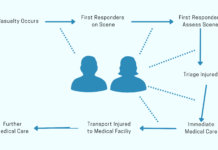With inflation causing consumers to change their spending habits, major retailers are leaning into “omnichannel” shopping options to draw in customers
Published: August 28th, 2002
Writers: Jaclyn Peiser
Link: https://www.washingtonpost.com/business/2022/08/28/curbside-pickup-shopping/
Curbside pickup, BOPIS (buy online, pick up in-store) and other “omnichannel” approaches meant to make shopping seamless no matter the point of purchase — in-store, by phone, app or desktop — were already gaining traction before the coronavirus crisis took hold in early 2020. But the pandemic forced retailers to adapt quickly to new safety concerns and social distancing norms, and now there’s no going back for many consumers: 33 percent of adults younger than 50 who started using curbside pickup during the pandemic say it’s a habit they expect to continue, according to a study from the Associated Press-NORC Center for Public Affairs Research and the SCAN Foundation.
Retailers ranging from major department stores to local hardware stores are leaning into the demand. But some may take it a bit further — by adding fees.
As inflation bogs down shoppers, some retailers fare better than others.
“Retailers have started to see it as a competitive advantage,” said Katherine Cullen, the senior director of industry and consumer insights at the National Retail Federation. “They know it’s something shoppers like … and it addresses the reality that there’s not really a distinction in consumers’ minds anymore between online or in-store.”
A recent round of earnings reports from some of the nation’s largest retailers and government data show consumers are changing how and what they buy. Though they’re still spending, a larger share of their resources is going toward necessities like gas and groceries because of historically high inflation. That leaves less room for more discretionary purchases like apparel, consumer electronics or a DIY project for the home.
To win over shoppers, retailers are focusing on improving the experience. One important draw is offering several shopping options, according to Conor Flynn, the chief executive of Kimco Realty. The real estate investment firm was early to the omnichannel trend, working with its retail tenants to put in their branded neon green designated parking signs in its shopping centers. The company even trademarked “curbside pickup” right before the pandemic hit.
“I think consumer habits and behavior is changing so rapidly that there isn’t sort of one thing that is consistent across the board,” he said. “It’s almost like how you shop for groceries today — there’s no consistency. People go to like three different grocery stores for three different things. And I think the same goes for how people shop — whether it’s online, or in-store, or curbside, or buy online — they sort of want the menu of options that works and whatever works for them that day.”
The options are particularly helpful for shoppers with young children. Jelisa Osouna, a single mother in Newport News, Va., opts for curbside pickup whenever her 1-year-old daughter is with her.
“It’s very convenient if I need to grab something really quick,” Osouna, 30, said, adding that it saves her from having to lug her daughter and the car seat out of her car. “It can be a lot sometimes, so curbside is perfect.”
Supply chain bottlenecks and labor shortages during the pandemic also shifted expectations for consumers about wait time for online delivery orders. People realized that curbside and BOPIS are often faster, Cullen said. These changes allowed retailers to shave costs by persuading their customers to drive their own cars, using their own gas, in their own time, to pick up their items from the store. The BOPIS model also creates opportunities for shoppers to pick up some more items when they go inside to retrieve their online order, Flynn said.
“You get the halo effect,” he added. “And that’s really powerful.”
But Amanda Wise said she uses curbside pickup, in part, to avoid impulse spending. “The problem with Target is as soon as you go in, it’s hard to leave without spending at least $100,” the 34-year-old from Raleigh, N.C., said. Wise added that prices at some stores are cheaper online and she can use coupons and take advantage of cash-back apps or browser extensions when she buys ahead.
Most major retailers don’t charge for curbside pickup as long as customers meet an order minimum, generally at least $30 to $35. But that could change, Chad Lusk, a retail consultant at Alvarez and Marsal, said, noting that Sam’s Club recently added a $4 fee for customers who don’t have the premium membership, Sam’s Club Plus.
“As in-store shopping meaningfully returns, retailers now have to start comparing the cost of curbside fulfillment using additional labor to in-store purchases,” he said, adding that Sam’s Club’s move could be used “as a way to [incentivize] consumers fully back into stores.”
Bob Hoyler, a retail consultant with Euromonitor International, said he wouldn’t be surprised if other warehouse clubs like Costco or BJ’s Wholesale Club also adopted fees because customers are mostly drawn to the bulk discounts. But he doesn’t believe fees would go over well at grocery stores, particularly among consumers who choose curbside over delivery services like Instacart and Shipt to avoid the added cost, including tips.
If a curbside user is struggling financially and the grocer decides to tack on a fee, “you better believe [those shoppers] are going to be investigating the alternatives immediately,” Hoyler said.
“Further down the spectrum, we’re seeing the grocery space invest in microfulfillment centers, automated facilities that picks and stages orders for both in-store pickup and at-home delivery, separate from the store itself,” he added.
Microfulfillment centers, which are often used for one- or two-hour delivery, are particularly effective in densely populated regions. But they aren’t prevalent in rural areas, Cullen noted. Instead, omnichannel shopping options are particularly beneficial to those communities.
Commentary
This topic of curbside pickup being a larger part of the grocery shopping experience after COVID is part of what Honda wants us to explore. The statistic that 33 percent of adults younger than 50 who started using curbside pickup during the pandemic say it’s a habit they expect to continue is the first step of proving that. From this article, there are many pros and cons of curbside pickup that each retailer is trying to improve on their own. Pros include convenience, time saving, usable for many types of customers (single parents, college students, elderly, etc.), and a possible money saver depending on the shopping. The cons that this article mentions is the possibility of extra charges for the service. The article seems to anticipate that customers will always take the cheaper, easier option. This can be true most of the time however, again based on that first statistic, it seems a good amount of customers are sticking with curbside pickup because of the routine of it. Although it may not please all customers, I think we will be seeing this ease of use and routine pros of curbside pickup be more common.




